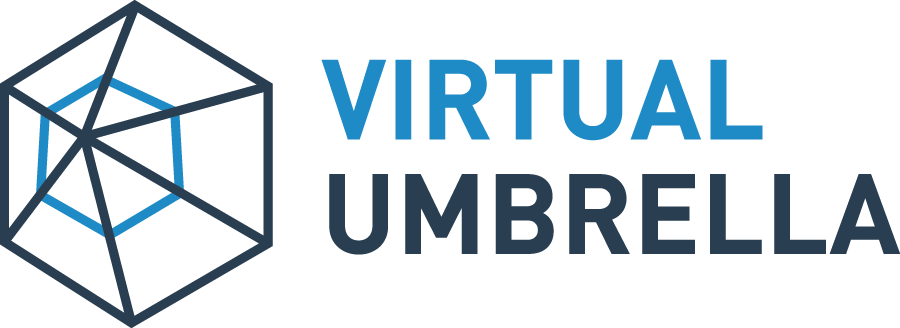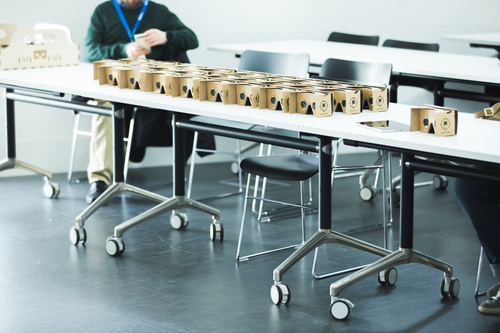Guest blog: VRUK Festival 10th & 11th February
Last week the Virtual Umbrellateam and Ravensbourne team hosted VRUK Festival. A two day Virtual reality Festival. As we were running keeping things organised and on track, we asked our Guest blog writer Liz Mercurito write up a quick summary of the event from her visit. Thank you.
Judgement Day.
Ok, so maybe not as dramatic as Terminator. I’m almost certain that Cyberdyne weren’t involved… but February the 10th and 11th 2016, the debut of VRUK, poised a significant date for virtual reality.

VRUK was not only backed by an impressive artillery of creative industry veterans such as The British Film Institute and Creative Skillset, it also boasted an impressive arsenal of guest speakers with talent ranging from AAA games studios to the BBC. It was no surprise then, that VRUK tickets sold out.
And with all this, it’s becoming harder to ignore the titan that is virtual reality.
Into the Rabbit Hole…
The gargantuan size of VRUK was apparent as soon as I set foot in Ravensbourne, spanning five floors of VR demonstrations, workshops and talks. Each floor was packed with approachable like-minded individuals all donning head mounted displays and chatting excitedly about the future of VR.
First stop, the Immersion Zone. The Immersion Zone was every VR lovers playground. Seriously, this place was like Wonderland. Not because everyone was mad there but because of the varied applications of VR on offer. As someone who comes from a computer game background, the Immersion Zone was a real eye-opener.
 Hi-res images by Ryan Winterbotham Photography. If you want professional photos, he’s awesome!
Hi-res images by Ryan Winterbotham Photography. If you want professional photos, he’s awesome!
I felt right at home with companies such as Rewind showing their HTC Vive game, Pane in the Glass. Pane in the Glass was getting a lot of attention and a lot of laughs as players used the Vive wands to clean windows whilst being hoisted up the side of a building!
The application of VR with 360 video is seemingly becoming a favourite in improving immersion in documentaries and music videos. Film makers DPYXexpressed how after releasing their first feature film, they were keen to move onto using VR with 360 video. Like all of the exhibitors, DPYX were keen to share knowledge on the process behind creating content for VR and their excitement in being part of such pioneering technology. They were showcasing their documentary on the artist Calder Greenwood and his creation of a 12 foot tall papier mache Nicolas Cage! It was very surreal being in the same room as a 12ft Nick Cage I can assure you…
Aside from the Immersion Zone, VRUK also had a dedicated show space to 360 video using the Oculus Rift and Gear VR, showing a wide range of varied documentaries from around the world.

Leaving my comfort zone of the more familiar applications of VR, I ventured into the great unknown. I was aware that VR was being used in simulations and I had heard that it was being adopted in digital marketing but seeing these rumours become reality was quite grounding.
Nicola Herbertson, Director of Hao2 demonstrated how VR is being used to improve access to public services. Herbertson explained how Hao2 create 3D worlds as an interface to public services to help those with disabilities or social anxieties. A pilot scheme with the Job Centre is currently in progress.
As well as software applications, hardware was also available to test drive. There were interactive experiences using the Leap Motion, a tease of Eye Resonator and Feel Three demonstrated their futuristic looking (…although when I say futuristic I’m always thinking Blade Runner…) motion simulator for use with the Oculus Rift.
There were a lot of talks at VRUK. And that is a massive understatement. It is evident that a great deal of care and consideration went into selecting a diverse range of speakers whose skill sets and experiences would elicit an extensive range of topics to address the needs of VRUKs attendees.
The speakers coloured every shade of the creative industry spectrum, ranging from designers to developers, directors to producers and marketing executives to company founders. Representation from Sony PlayStation VR through to the BBC through to independent studios such as The Third Floor meant that virtually no one was left out!
The talks were then categorised into Big Talks, Research Talks and Workshops. The bigger talks detailed lessons learned from creating and marketing content for VR and provided an insight to potential collaboration across sectors of the creative industry.
Robbie Cooke, for example, from Rebellion discussed how lessons learned from one sector of the creativity industry can be adopted in another. He shared his experiences of marketing VR, a product which isn’t available yet. Whilst Rachel Derbyshire touched on the unknowns of the VR world, posing the question how inclusive can VR really be and is it for everyone?
Workshops were more open than the larger talks. Some speakers worked through informal tutorials whilst others encouraged debate and facilitated dynamic conversation to share ideas and perspectives.
The research talks were a more involved and sometimes technical show and tell. Many speakers shared what they were working on, lessons learned and the potential of their work. Debra Anderson and her co-worker from Datavized, for example, presented a talk on the milestones and advancements of WebVR, touching on improvements in accessibility and graphic fidelity. They discussed the current WebVR projects Datavized are embarking on and the way in which WebVR is being used by research institutions.
Last but certainly not least, I popped along to the Blippar VR Jam! Here, a number of talented students studying creative courses such as interaction design, product design and animation, were busily working away. They had split into teams after being given a brief (and only two days!) to create a concept and/or prototype for a VR marketing campaign for Coca Cola, Red Bull or Nike.
The students expressed that the jam had given them the confidence to take the leap into the world of VR and that the brief had encouraged them to think differently about the design process. One team shared that they felt VR brings a whole new dimension to product design, when for example considering physical space and the physical limitations of users.
Once I got the hint that they were actually very busy, a slipped away for a spot of networking…
And back to reality…
A common point of conversation at VRUK was the pioneering nature of VR. These talented individuals involved in all aspects of VR from marketing to development, all believe in the future of VR and want it to succeed. Even though there is no VR rule book and there is a still a lot to learn, everyone is certain that together, we can make the most of what VR has to offer.
It’s no secret that over the years VR has had many opportunities to fulfil its potential, only to fade away muttering the immortal line, “I’ll be back!”. Leaving VRUK, the atmosphere felt very different. With such enthusiasm, collaboration and belief, its seems so much more likely that, this time, VR is here to stay!

She has mentored participants in the BAFTA Young Game Designer workshops, as well as local initiative Django Girls. Liz is a member of the prestigious Develop 30 under 30 club, having been awarded the acolade in January, 2016.









 Hi-res images by
Hi-res images by 
